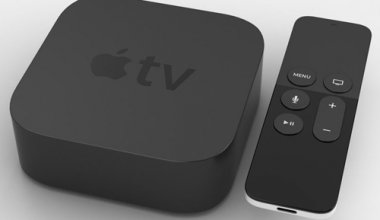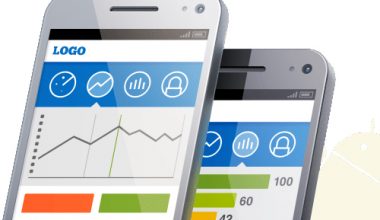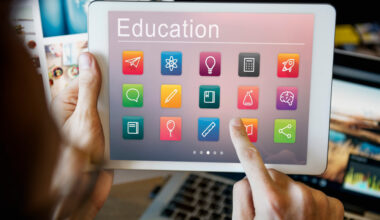Amazon may need to cut prices or add features to its Kindle e-book reader to compete with Apple’s color-touchscreen tablet, analysts say
Internet retailer Amazon.com (AMZN) may need to write a new chapter for the Kindle in the face of fierce competition from Apple’s iPad.
Since Apple (AAPL) announced on Jan. 27 that it would sell a versatile tablet computer that lets users read electronic books and perform a range of other computing tasks, analysts have said the iPad would likely take a bite out of sales of dedicated e-book readers such as Amazon’s popular Kindle. In light of Apple’s Apr. 8 announcement that it sold 450,000 iPads in less than a week, Wall Street analysts are already slicing their forecasts for Kindle sales.
Charlie Wolf, a senior analyst at Needham & Co. who has a “buy” rating on Apple shares, on Apr. 9 cut his forecast for Kindle sales this year, settling on a range from 2.5 million to 3 million units, in place of a previous forecast of 3.6 million units. Wolf estimates that Amazon sold 2.2 million Kindles in 2009. “It’s not a compelling product,” he says of the Kindle, because Apple’s iPad offers more features, such as the ability to play video, plus a more compelling design.
Piper Jaffray (PJC) analyst Gene Munster, who has an “overweight” rating on Amazon shares, cut his 2010 forecast for Kindle sales by 400,000 units, to 3.45 million. Amazon’s top-of-the-line Kindle DX, which is designed to let users read e-books on a black-and-white screen, is selling for $489, just $10 less than Apple’s least-expensive iPad.
The iPad starts at $499 for a model with 16 gigabytes of storage, a color touchscreen, and a library of 60,000 e-books. It also affords users the ability to watch videos, listen to music, and run a wide variety of applications. “No one in their right mind is going to buy a Kindle DX,” says Munster.
consumers dumping Kindles for iPads
To keep pace with consumers’ heightened expectations about what a tablet-style computer should do, Amazon may need to lower the Kindle’s price or introduce such new features as a color screen to make the device more compelling, analysts say.
Many iPad buyers seem poised to use them as e-reader replacements. On Apr. 3, the day the tablet went on sale, Piper Jaffray surveyed 448 customers in line at Apple’s New York and Minneapolis stores. Ten percent of prospective buyers said they had considered a Kindle but decided instead to buy an iPad. And 58% of the respondents who already owned Kindles said they planned to stop using them in light of their iPad purchase.
Munster recommends that Amazon drop prices by $100 on its smaller Kindle reader, which costs $259 and sports a 6-in. screen, as well as on the Kindle DX, which has a 9.7-in. screen. “If they lower the Kindle’s price, it’ll survive,” says Munster. “If they don’t, it won’t.”
Susan Kevorkian, an analyst at market researcher IDC, says Amazon needs to update the Kindle with a color screen and replace its buttons with touchscreen capabilities. “They absolutely need a color screen—the sooner the better,” she says. Earlier this year, Amazon acquired Touchco, a company that makes touchscreen technology
Amazon isn’t the only company whose products are suffering from comparisons with Apple’s tablet. The iPad is drawing consumers’ attention away from such other dedicated e-book readers as Barnes & Noble’s (BKS) Nook, and Sony’s (SNE) Reader, analysts say.
devices channel buyers to e-stores
To be sure, the fortunes of Amazon, which reported $24.5 billion in sales last year, won’t rise or fall on the Kindle’s success. The device contributes a small portion of overall revenues, with analysts estimating that Amazon has sold 2 million to 3 million Kindles since its 2007 introduction.
Still, digital books are a key to Amazon’s future as consumers buy more reading material in electronic form. Controlling the device on which that material is read is a way for tech vendors and retailers to steer consumers to their online stores.
In an Apr. 12 report, Goldman Sachs (GS) said e-book sales will more than quadruple from 2010 to 2015, reaching $3.19 billion. Goldman predicted that Apple’s share of the e-book market would more than triple, to 33% in 2015, and forecast that Amazon’s share would fall to 28% in 2015, from 50% this year.
Shares of Amazon gained 1.14, or 0.8%, on Apr. 12 to close at 141.20. The shares have gained nearly 5% this year, compared with an 8.3% increase in the Nasdaq Composite Index.
Apple has emphasized the iPad’s reading capability in its TV ads. At an Apr. 8 press conference at Apple’s headquarters, Chief Executive Steve Jobs said iPad owners had downloaded more than 600,000 e-books for the device. Apple spokesman Tom Neumayr had no comment on Apple’s strategy for competing with the Kindle.
Apple’s rivals in the e-reader market are taking steps to fight back. Barnes & Noble on Apr. 12 said it will begin selling the Nook in 1,070 Best Buy (BBY) stores and through the retailer’s Web site.
Kindle: lighter and no network charge
Steve Haber, president of Sony’s digital reading business, said in an e-mailed statement that “the introduction of a tablet device, which includes digital reading as part of its functionality, is a good thing for the digital book business.”
Amazon spokesman Andrew Herdener wouldn’t comment on future product plans. He says the Kindle’s light weight (two-thirds of a pound for the smaller model, vs. 1.5 lbs. for the iPad) and ability to download books without incurring cellular network charges constitute advantages over the iPad.
Three initial iPad models can connect to the Internet via WiFi to download books and magazines, run applications, and browse the Web. Three additional models due later in April will connect to AT&T’s cellular network for additional charges of $15 or $30 per month.
Offering third-party applications for the Kindle could help keep buyers interested. In January, Amazon let developers start creating Kindle apps, which Amazon says will be available later this year. Developer Sonic Boom is building word games and puzzles. Handmark is creating a Zagat-branded restaurant-ratings guide, according to Amazon.
Amazon has also been distributing software for Research In Motion’s (RIMM) BlackBerry smartphones, Apple’s iPhone, and—yes—the iPad, that let users of those devices read the more than 480,000 digital titles Amazon is selling. “Being able to offer Kindle on other devices buys Amazon some time and keeps [Kindle] relevant,” IDC’s Kevorkian says.
To compete with Apple’s iPad, Amazon will need to keep finding innovative ways to draw readers to its digital books—and must roll some of them out soon.
Resource:
http://www.businessweek.com/technology/content/apr2010/tc20100412_516320.htm





